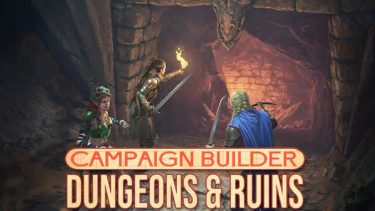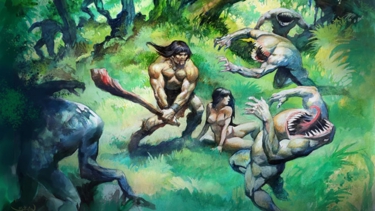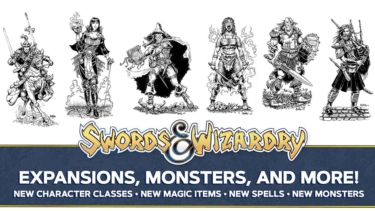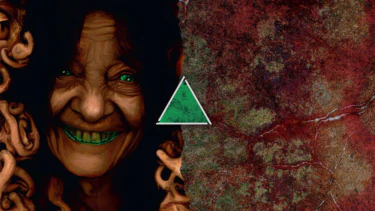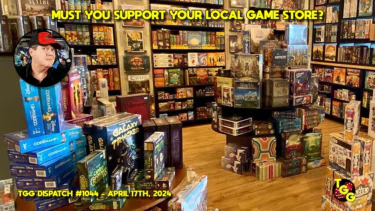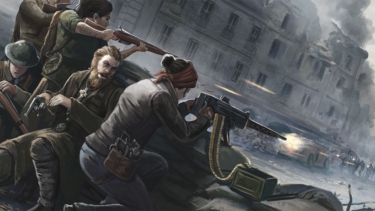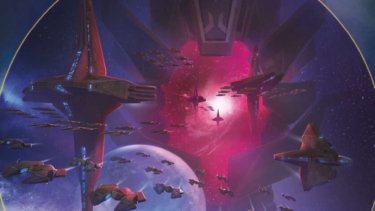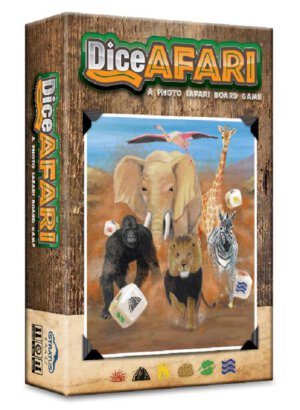
Publisher: Stratus Games
Designer: Chris James
Year: 2012
Players: 2 – 4
Ages: 8+
Playing Time: 15 Minutes
Retail Price: Under $24.95
Category: Modular Dice Rolling Board Game
Components:
- 18 Game Tiles
- 5 Custom Dice
- 14 Map Cards
- 28 Photo Tokens
- 72 Travel Tokens
- Instructions
From Stratus Games:
You and your friends are going on a photo safari! To see as many animals as possible, you will have to plan your trip well. Whoever visits the most areas and takes the best photographs will be the safari champion!
Select a route to visit on the animal-shaped map using strategic dice rolls. But choose wisely, because routes are limited and other players can revisit the areas you select. Then take a photo of an animal that you see before someone else does. Once the entire map has been visited, points are scored for sets of photos taken and the areas most recently visited. The player with the most points wins!
DiceAfari is an interesting little game designed by Chris James. The object of the game is to collect different safari photos scattered around the board, which changes from game to game. The player who collects the highest value of photo sets wins the game.
The components of DiceAfari are high quality. The round travel tokens look a bit generic, but everything else is quite 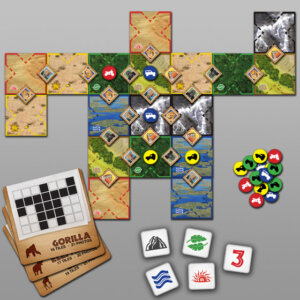
The theme of the game is that the players are all on a safari, exploring a wildlife preserve somewhere in Africa. The players collect pictures of animals and the player that can put together the best run wins.
The rules are very simple and cover a single four-page folded glossy full color sheet. There is one of those images on the rules that you can scan with a QR-enabled smartphone which will show you a video of how to play the game. A nice touch, as then you don’t have to bother teaching the game to others, just let them all watch the short video.
To set up the game, first shuffle and randomly select one of the map cards. You use the the safari tiles to build the map depicted on the card. The map cards are all in the shape of some animal, like the snake, gorilla, alligator, and flamingo. Stratus also includes two blank map cards so that you can create your own.
After creating the map, each player selects a color and takes the pile of travel tokens in their color. Randomly place the photo tokens around the map so that they fill in all of the dashed-line squares formed by the joining of two tiles together. The edges of the map do not get photo tokens.
All players roll the dice and the player who rolls the most mountains gets to go first.
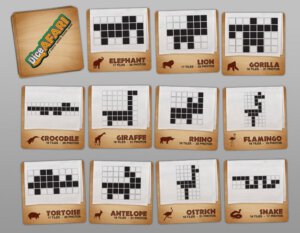
For the other four dice that you rolled, it works similar to Yahtzee. These dice show the various types of terrain that make up the map. There are six types: marsh, jungle, mountain, savanna, scrubland, and desert. You get to keep or discard as many of the terrain dice as you wish and can re-roll twice to attempt to get the result you desire. You can’t re-roll the bonus die.
Once you are finished rolling, you are ready to create a route on the map. A route must consist of 2 to 4 tiles, either horizontal or vertical, that you place your travel tokens on. You can also place them in a square, but never diagonally.
To explain this more clearly, let’s say you rolled two mountains, a desert, and a marsh. Looking over the board, you can see no place where these four terrains are next to each other, but you do see a mountain, desert, and marsh next to each other on the map in a straight line. You take three of your travel tokens and place them on the three tiles and you have now claimed these tiles. Any photos on the dashed squares between the tiles you claimed are now yours, you pick them up and add them to your score pile.
You can dislodge another player’s token that has already been placed on the board, by simply replacing their token with 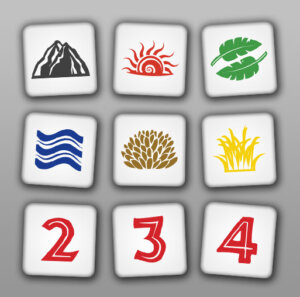
Play continues until all of the photo tokens have been claimed and all players have had at least played three turns. The game goes pretty fast, and you’ll finish one up in around fifteen minutes. Once you are done, follow the scoring rules on the back of the instructions to add up everyone’s points. The player with the most points wins.
Scoring is one of the most strategic aspects of the game, as it depends of the sets of pictures that you are able to collect. There are four different animals that you can snap pics of, and if you collect a set of all four it will earn you ten points. A set of three of the same animal will get you five points, and each additional gets you three points. A single animal is worth one point, and each travel token you have on the board is worth one point.
The other strategic element of the game is putting together the routes that are most beneficial to you, or hurtful to your opponents, based upon the luck of the die roll you were able to obtain. It takes a game or two to understand the strategy of the game, but the games are short enough that you’ll pick it up pretty quick.
This was an interesting game. It is a nice family game and would make a good filler or a way to get a night of gaming started. Kids younger than the recommended age of 8 can learn to play it, learn some basic gaming strategy, and have a good time too. The photo safari theme isn’t very exciting (for me at least), but it fits really well. Personally I would like to see a “Ghost Hunting” themed version, I’m just not sure how you would do the terrain tiles. Maybe cemeteries, hotels, residences, churches, and so on. Regardless, DiceAfari is a decent game.
- A Dungeon Delve for Kids?: A Review of Dungeon! - Oct 24, 2022
- Better, Stronger, Faster | Descent: Journeys in the Dark Second Edition Reviewed - Oct 23, 2022
- Your Planet is Doomed!: Invasion from Outer Space Reviewed - Oct 22, 2022



